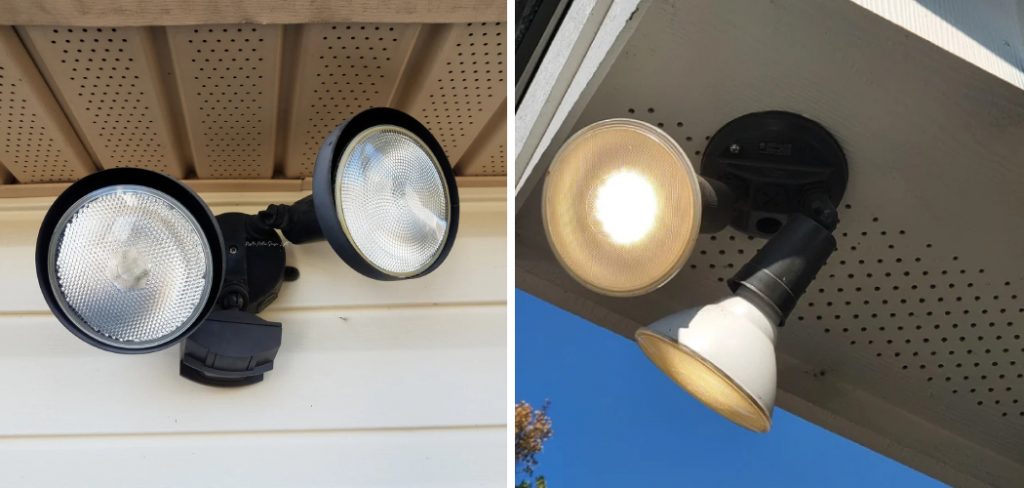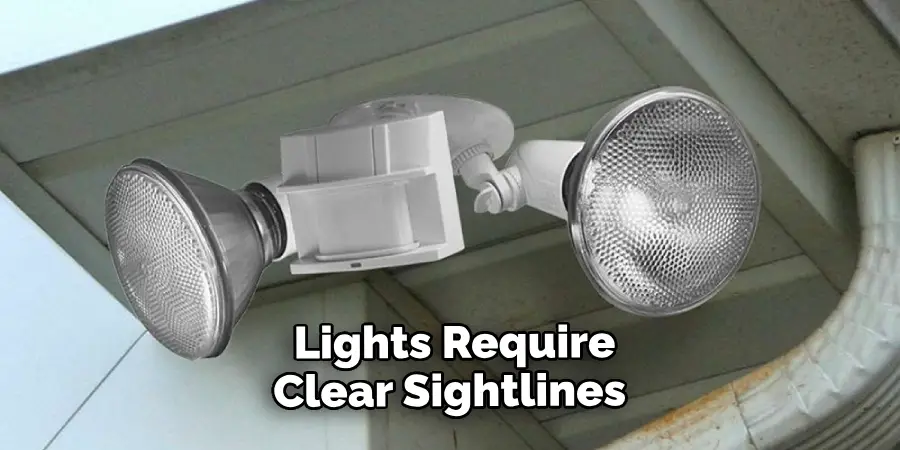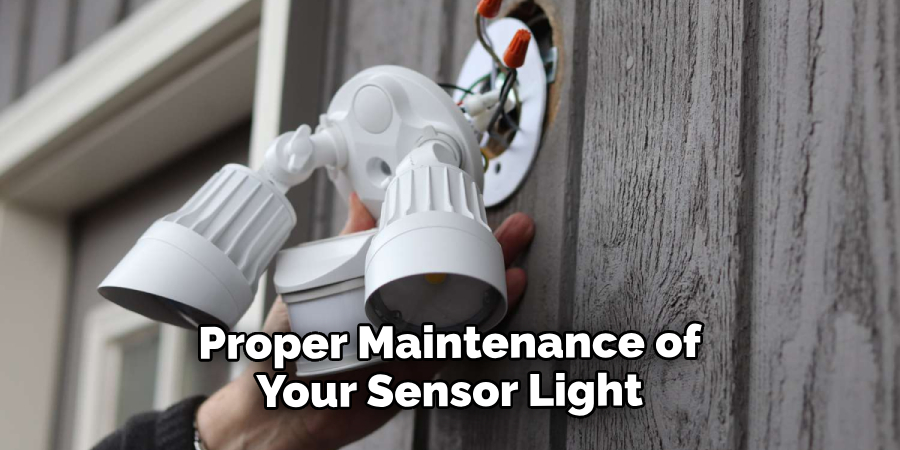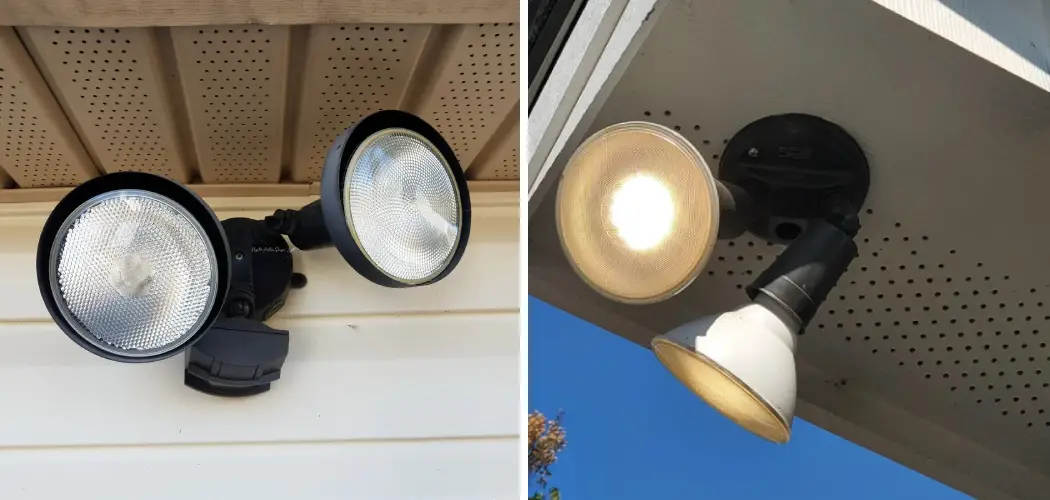Sensor lights can be very useful in illuminating dark areas around our homes. However, when they start to flicker, it can be irritating and a sign that something is wrong. Various factors can cause flickering sensor lights, and it can be difficult to determine what exactly is causing them to flicker. In this blog post, we will take a closer look at the reasons why sensor lights flicker and provide some helpful tips on how do you fix a flickering sensor light.

Can You Fix a Flickering Sensor Light?
When the sun sets, and the darkness descends, sensor lights are our saviors. They make it easier for us to navigate through the garden or driveway without stumbling and deter any unwanted intruders. But what happens when they start to flicker? Troubleshooting can be frustrating, particularly if there is no obvious reason for the problem.
You can try a few things to fix the flickering sensor light, including checking for loose wires, replacing the light bulb, or adjusting the sensor angle. So don’t let your flickering sensor light leave you in the dark; with a little persistence and know-how, you can have it shining bright once again.
Why Should You Fix a Flickering Sensor Light?
A flickering sensor light may seem like a minor inconvenience, but can indicate a larger problem. A malfunctioning light could be a sign that the sensor is not working correctly, which could compromise the safety of your home. Additionally, flickering light can be incredibly annoying, especially in an area where you spend a lot of time.
Fixing a flickering sensor light is an easy and affordable fix that can make a big difference in your home’s overall function and comfort. So, take a few minutes to troubleshoot the issue and fix that pesky flicker. Your peace of mind – and your eyes – will thank you.
How Do You Fix a Flickering Sensor Light: A Comprehensive Guide
1. Check the Bulb
If your sensor light is flickering, the bulb is the first and most obvious thing to check. Sometimes, the filament inside the bulb is damaged or loose, causing the light to flicker. In this case, you should replace the bulb with a new one. Ensure you get a bulb with the same wattage and voltage as the old one.

2. Set the Timer
Flickering sensor lights can also be caused by the timer setting. If the timer is set to turn the light on and off too quickly, it can cause the light to flicker. To resolve this issue, adjust the timer settings to ensure that the light remains on for the desired period of time, typically around 15-30 seconds.
3. Check the Sensor Range
Another common cause of flickering sensor lights is the detection range. If the range is too wide, it can cause the light to flicker, especially if there is a lot of movement around the sensor. To fix this problem, adjust the sensor range to eliminate false triggers.
4. Clean the Sensor
Dirty sensor lenses can also cause a flickering sensor light. If the lens is dirty, it can obstruct the sensor’s view and cause it to flicker. Clean the sensor with a soft, dry cloth to remove any dust and dirt buildup. If there are stubborn stains, you can use a mild detergent and water solution to clean them.
5. Check the Wiring
Next, if none of the above fixes solve the problem, you may need to check the wiring. Loose or damaged wiring can result in intermittent contact, causing the light to flicker. If you are not confident in your electrical abilities, calling a licensed electrician to handle the wiring repairs is best.
6. Replace the Sensor
In some cases, the sensor itself may be faulty and need to be replaced. If you have tried all the above solutions and your light still flickers, it might be time to get a new sensor. Make sure to purchase one that is compatible with your existing system.
7. Consider the Environment
Finally, if none of these tips work, consider the environment around your sensor light. Extreme weather conditions, such as strong winds or heavy rain, can cause the light to flicker. Try installing a shield around the sensor to protect it from external elements.
Flickering sensor lights can be frustrating, but with these tips, you should be able to fix the issue and have a properly functioning sensor light again. Remember to always follow safety precautions when handling electrical components, and if you are unsure, consult a professional.
With proper maintenance and care, your sensor light should provide reliable and efficient lighting for your home or business. So the next time someone asks you, “how do you fix a flickering sensor light?” you will have these useful tips to share with them. Follow these tips and say goodbye to flickering lights for good!
5 Considerations Things When You Need to Fix a Flickering Sensor Light
1. Check the Bulb
The first thing you should do when fixing a flickering sensor light is check the bulb. If the bulb is loose or damaged, it can cause the light to flicker. Make sure that the bulb is securely fastened in place and that it is not cracked or broken. If necessary, replace the bulb with a new one of the same type and wattage.
2. Check the Power Source
The next step is to check the power source for your sensor light. Make sure that it is properly connected and that there are no loose wires or faulty connections. You may need to reset any circuit breakers if they have tripped or replace any fuses if they have blown. Additionally, ensure that your power source provides enough voltage for your sensor light to operate correctly.
3. Clean the Sensor
The third step is to clean the sensor itself. Dust, dirt, and debris can build up on the sensor over time and interfere with its operation. Use a soft cloth or cotton swab dipped in rubbing alcohol to gently wipe away any buildup from the sensor’s surface. Be careful not to damage any of its delicate components while cleaning it.

4. Adjust Sensitivity Settings
If your sensor light still continues to flicker after checking and cleaning it, you may need to adjust its sensitivity settings. Most modern sensors come with adjustable settings for motion detection distance and duration of illumination time when activated by movement or sound waves in their vicinity.
Try adjusting these settings until you find a setting that works best for your particular situation and environment, as this will help reduce flickering caused by false triggers from nearby sources such as wind or animals passing by outside your home or business premises.
5. Replace Sensor Unit
Finally, if all else fails, you may need to replace the entire sensor unit if it has worn out due to age or extensive use over time. Look for a compatible replacement unit from a reputable manufacturer with similar features, such as sensitivity settings, motion detection distance, illumination duration, etc., to ensure maximum compatibility with your existing lighting system.
Additionally, read all instructions carefully before attempting installation so as not to damage any components during installation.
Benefits of Fixing a Flickering Sensor Light
Have you ever experienced walking home in the dark, only to be greeted by a flickering sensor light? If so, you know how frustrating it can be. Not only does it make it difficult to see where you’re going, but it can also be a security concern. An inconsistent light source can make it easier for potential intruders to go unnoticed. Luckily, fixing a flickering sensor light can have a multitude of benefits.
A steady light source illuminates your path home and provides a sense of security. In addition, it can save you money on your energy bill by avoiding unnecessary power usage. Don’t wait until it’s too late; take control of your home’s safety and comfort by fixing that flickering sensor light today!
Some Common Mistakes People Make When Trying to Fix a Flickering Sensor Light
Are you tired of your sensor light flickering on and off? Before trying to fix it yourself, be cautious of common mistakes people make. First, avoid putting too much pressure on the sensor, as it can cause damage to the wiring. Additionally, ensure the light’s location is clear of obstructions like branches or debris.

People often forget that sensor lights require clear sightlines to function properly. Lastly, test the power supply and wiring before attempting repairs on the sensor. Taking these precautions can save you time money, and prevent further damage to your sensor light.
What Cleaning Methods Are Safe for Your Sensor Light?
Sensor lights are becoming increasingly popular in homes and businesses, offering added security and convenience. However, proper maintenance of your sensor light is key in ensuring they continue to function properly. When cleaning your sensor light, it’s important to use safe methods that won’t damage the delicate electronics.

Avoid harsh chemicals that can corrode the sensors’ coating; opt for a gentle cleaning solution and a soft cloth. You can also use compressed air or a soft-bristled brush to remove dirt and debris from the sensors. Regular cleaning will not only keep your sensor light looking like new, but it will also ensure it keeps working properly for years to come.
Conclusion
Flickering sensor lights can be a nuisance, but several ways exist to fix the problem. Before calling an electrician, you can check the bulb, timer settings, and sensor range and clean the sensor. If none of these fixes work, consulting with a licensed electrician to troubleshoot the wiring is best.
Remember, always prioritize your safety when dealing with electrical components, and if in doubt, don’t hesitate to call for professional help. Thanks for reading our post about how do you fix a flickering sensor light.

